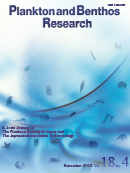18 巻, 4 号
選択された号の論文の9件中1~9を表示しています
- |<
- <
- 1
- >
- >|
Original Papers
-
2023 年 18 巻 4 号 p. 167-177
発行日: 2023/11/27
公開日: 2023/11/30
PDF形式でダウンロード (971K) -
2023 年 18 巻 4 号 p. 178-184
発行日: 2023/11/27
公開日: 2023/11/30
PDF形式でダウンロード (1186K) -
2023 年 18 巻 4 号 p. 185-189
発行日: 2023/11/27
公開日: 2023/11/30
PDF形式でダウンロード (548K) -
2023 年 18 巻 4 号 p. 190-197
発行日: 2023/11/27
公開日: 2023/11/30
PDF形式でダウンロード (1469K) -
2023 年 18 巻 4 号 p. 198-205
発行日: 2023/11/27
公開日: 2023/11/30
PDF形式でダウンロード (2229K) -
2023 年 18 巻 4 号 p. 206-213
発行日: 2023/11/27
公開日: 2023/11/30
PDF形式でダウンロード (769K) -
2023 年 18 巻 4 号 p. 214-224
発行日: 2023/11/27
公開日: 2023/11/30
PDF形式でダウンロード (1843K)
Note
-
2023 年 18 巻 4 号 p. 225-227
発行日: 2023/11/27
公開日: 2023/11/30
PDF形式でダウンロード (552K)
ERRATUM
-
2023 年 18 巻 4 号 p. 228
発行日: 2023/11/27
公開日: 2023/11/30
PDF形式でダウンロード (124K)
- |<
- <
- 1
- >
- >|
